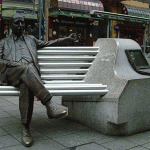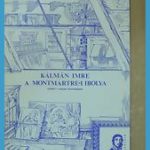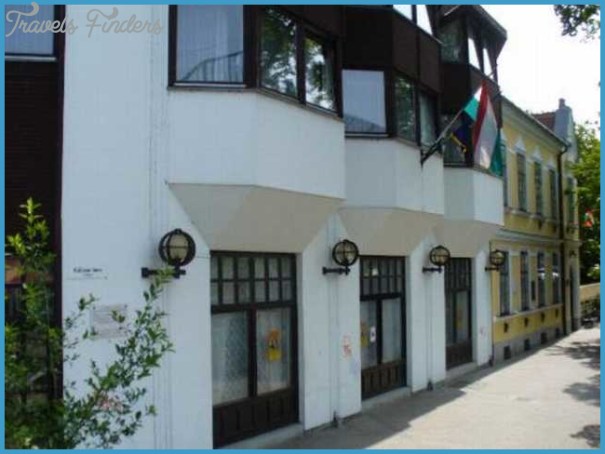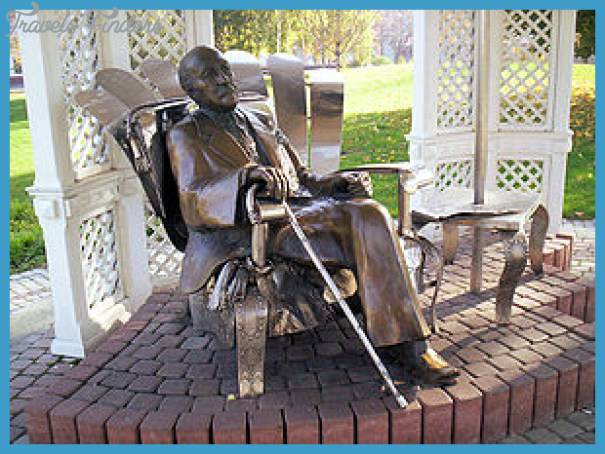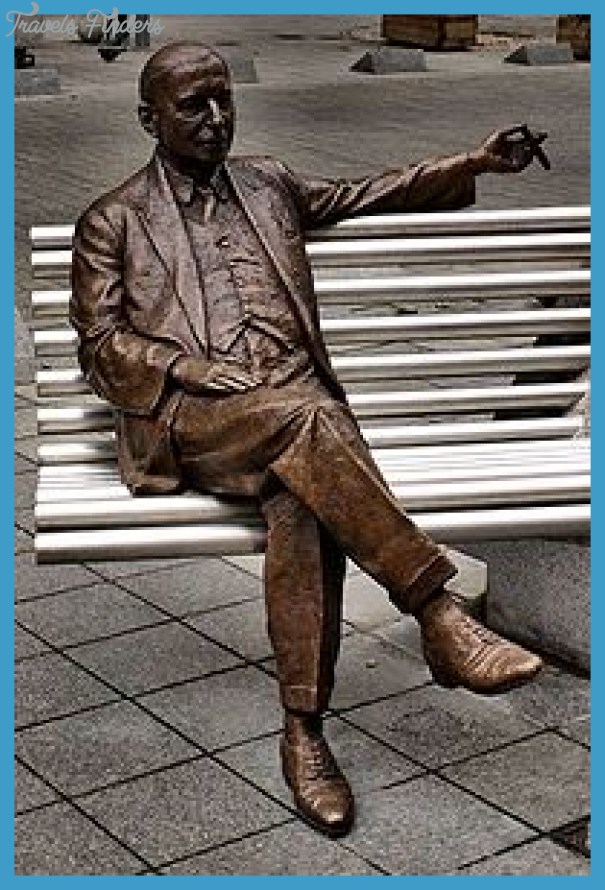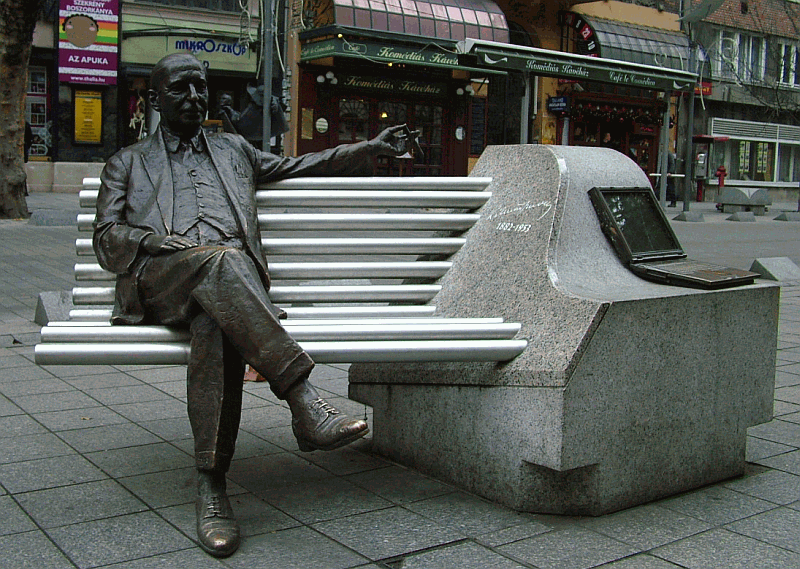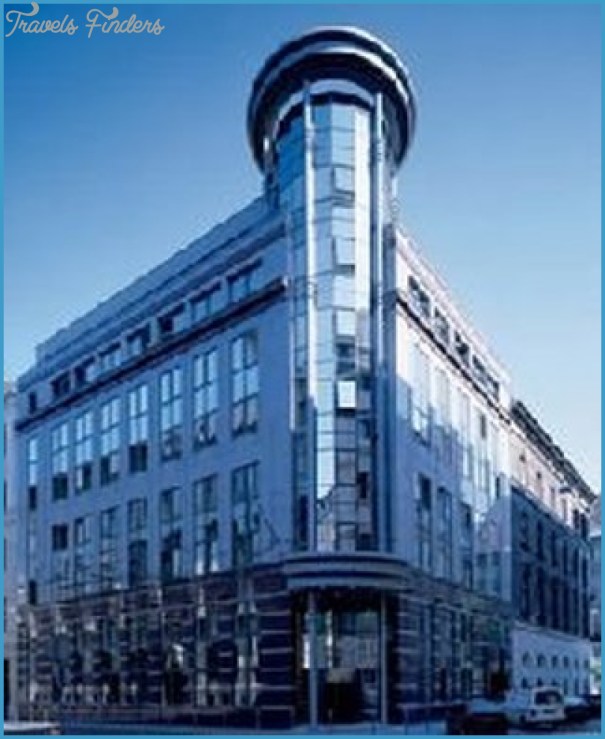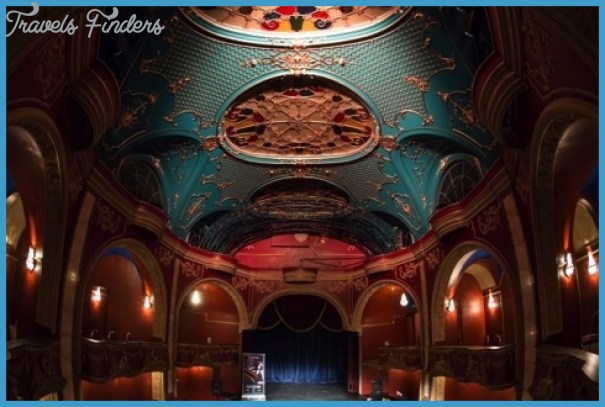Kalman Imre Muzeum
Imre (or Emmerich) Kalman, the affable Hungarian-born composer of such operettas as Die Csardasftirstin (1915), Grafin Mariza (1924) and Die Zirkusprin-zessin (1926), is twice commemorated: at his birthplace in the resort town of Siofok, on the southern shore of Lake Balaton, and in Vienna, where he lived for nearly 30 years, in a memorial room at the Osterre-ichisches Theatermuseum (see Ziehrer).
Kalman was born in 1882 and lived in Siofok until he was ten years old. He studied music in Budapest and Vienna and soon made a name as a composer of operetta in both of the capital cities, producing a succession of humorous and satirical works for the Viennese theatres during World War I, the Twenties (when he visited the USA for two premieres) and the Thirties. He married in 1929 and in 1934 bought a house in the north-east, 19th district of Vienna, Hasenauerstrafie 29, which became known as the Kalman Villa and is today marked by a memorial plaque; nearby, in the Turkenschanzpark, there is a bust of him by the Hungarian sculptor Gyula Meszes-Toth. Kalman was Jewish, so on the Anschluss he took his family to Paris, where in 1938 he was awarded the Legion d’honneur, and on to New York, becoming an American citizen in 1940; Hungary allied herself with Germany and his music was banned by the Nazis. He returned to Europe in 1949, living in Paris at 26 Avenue Georges-Mandel, where he died on 30 October 1953; at his request he was buried in Vienna, in the Zentralfriedhof, among the city’s other great musicians. Other public memorials (streets, busts, even a hotel suite) to Kalman can be found in Bad Ischl, Munich, Saarbrucken and Budapest.
Kalman Imre Muzeum Photo Gallery
Finding the memorial house in Siofok sounds easy, but it is a little elusive: Kalman Imre Setany faces the railway lines that run along the lake, and is a pedestrian area with open-air cafes and market stalls selling Hungarian craftwork; the Kalman house is two doors west of the station. The museum occupies three rooms on the ground floor and displays items donated by Kalman’s widow, Vera, and their son Charles (also a composer). Two rooms show mannequins in period and stage costumes. The first is dominated by the composer’s boudoir grand piano, with display cases and information boards in opposite corners. In the cases are plaster casts of his hands set next to an unfinished cigar in an ashtray, a letter from Cole Porter, copies of sheet music and handwritten medical records (in German) from his last week in Paris.
On the wall are photographic portraits of his family and posters of performances of his music in Siofok; by the door to the second room are a marble bust and the ubiquitous bronze laurel wreath. The second room is decorated as a theatre, with recorded music in the background. Five of the six boxes are display cases devoted to the history of Austro-Hungarian operetta, with published sheet music and scores, photos, a wig box and wig, opera glasses, programmes and recordings. In the hallway display boards trace what is known of his Siofok childhood, with family photos and a case containing his concert clothes. The third room is filled with furniture from his last Paris flat – a waistcoat hanging from a chair, a velvet robe and briefcase from the coat-stand – and display cases with yet more photos, music and books about his life and works.
The memorial room in the Oster-reichisches Theatermuseum in Vienna is partitioned in two, with a door minus its upper window glazing through which visitors can peer into a re-creation of a room in one of Kalman’s homes. The warm, low lighting evokes a former era. On the Bosendorfer piano are scores, family photos and bronze casts of his hands; on the chaise longue a red plaid blanket, silk bathrobe and cane; on the old television set an even older radio. But the plaster death mask rather takes away from the sense of its being Kalman’s room. In the other half there are three display cases largely filled with photographs, two devoted to his time in Vienna and the third to Hollywood, which (mystifyingly) contains a velvet cushion on which his European orders are pinned. On the wall are costume designs for the 1924 Theater an der Wien production of Grafin Mariza.





